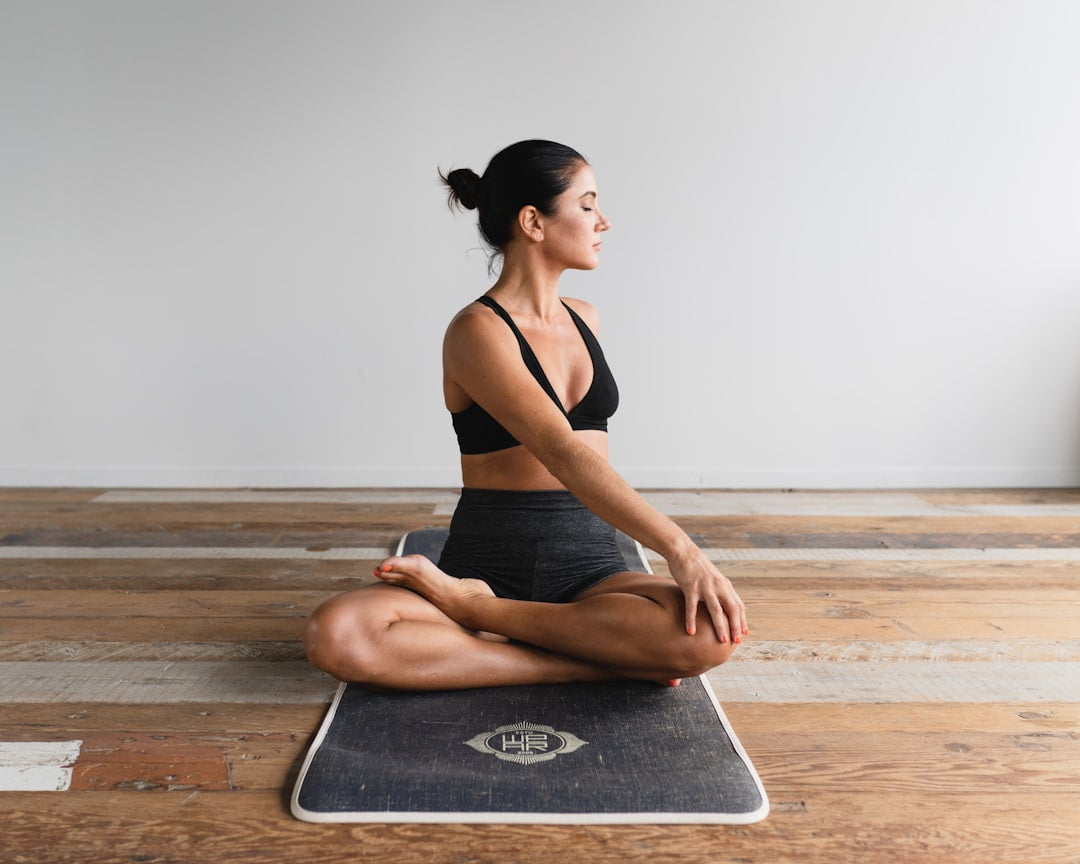In today’s fast-paced world, finding time to go to the gym can be a challenge, making home exercises an increasingly popular solution for staying fit and healthy. The beauty of exercising at home lies in its simplicity and accessibility; it proves that achieving a full-body workout doesn’t require expensive equipment or a large space.
From home exercises for abs and chest to home leg exercises and home cardio exercises, the possibilities are limitless. The importance of incorporating movements that target various muscle groups, including home back exercises and home shoulder exercises, cannot be overstated. This approach ensures a balanced fitness routine that promotes overall wellbeing.
In this article, we delve into the realm of equipment-free home exercises, outlining effective strategies for how to workout at home without the need for specialized gear. We will explore a variety of exercises at home that cater to different fitness levels, from beginners to the more advanced, including cardio at home exercises and lower back home exercises.
Additionally, we’ll provide tips for setting up an efficient workout space in your home to enhance your exercise routine. For those interested in gradually integrating equipment, we’ll also suggest basic items to add to your home workout no equipment regimen. Whether you’re seeking to improve your endurance, strengthen your muscles, or simply maintain a healthy lifestyle, this guide will equip you with the knowledge needed to achieve your fitness goals right from the comfort of your own home.
Benefits of Home Workouts
Exercising at home offers unparalleled convenience, allowing you to fit workouts into your busy schedule without the commute to a gym. It’s not only a time-saver but also cost-effective since you avoid gym fees and the expense of commuting. You can exercise at any time that suits you, making it easier to maintain consistency with your fitness regime.
The privacy of home workouts means you can exercise without feeling self-conscious and adjust your routine to your personal comfort level without external pressure. This environment also reduces the risk of distractions and interruptions from other gym-goers, allowing you to focus solely on your workout.
Home workouts are not only flexible but also customizable. You have the freedom to select your workout conditions—from the music and temperature to the equipment used. This personalization extends to the exercises themselves, enabling you to explore new workouts or adjust the intensity as you see fit.
Moreover, working out at home can be more hygienic as you avoid shared equipment and facilities, which can be breeding grounds for germs. Lastly, the responsibility for your fitness and safety rests entirely with you, encouraging a deeper understanding of exercise and its effects on your body.
Equipment-Free Home Exercises
Jumping Jacks
Jumping jacks are a dynamic full-body workout that improves your cardiovascular system and enhances mobility in your shoulders, hips, and spine. Start with your legs together and arms at your sides, then jump while spreading your legs and raising your arms above your head. This exercise can be performed anywhere and incorporates both resistance and aerobic training, making it a versatile addition to your home workout.
Mountain Climbers
Mountain climbers offer a comprehensive workout, targeting multiple muscle groups and boosting cardio endurance. Begin in a plank position and alternate bringing your knees towards your chest, increasing the speed to intensify the exercise. This movement not only strengthens the core and lower body but also enhances agility.
Squats
Squats are fundamental for strengthening the lower body, using your body weight to improve muscle endurance and posture. Start with your feet hip-distance apart, lower your body by bending your knees while keeping your back straight, and then return to the standing position. This exercise mimics everyday movements, making it functional and effective for home workouts.
Push-ups
Push-ups are a no-equipment exercise that strengthens the upper body and core simultaneously. Ensure proper form by keeping your body in a straight line from head to heels and your hands under your shoulders. Lower your body until your chest nearly touches the floor then push back up. This exercise is adaptable with variations to increase intensity.
Planks
Planks are a powerful way to target the entire core without the need for any equipment. Start in a forearm position with your elbows under your shoulders and your body forming a straight line from your shoulders to your heels. Hold this position while engaging your core to stabilize the body. This exercise can be modified with side planks and other variations to enhance difficulty and engage more muscle groups.
Creating an Effective Home Workout Space
To create an effective home workout space, it’s crucial to select a dedicated area solely for exercise, ensuring it’s free from distractions like televisions or other electronics. The space should be large enough to accommodate any equipment you plan to use and allow for safe movement. Good lighting and proper ventilation are essential for maintaining a positive and safe exercise environment.
Choosing the Right Location
Opt for a location that is convenient, comfortable, and private. This helps in maintaining focus and privacy during workouts. A well-ventilated room away from high-traffic areas is ideal. Additionally, consider the flooring—comfortable, easy to clean, and suitable for your equipment.
Motivational Decor
Enhance your workout area with motivational elements. Adding a feature wall, inspirational quotes, or vibrant colors can boost your mood and motivation. Mirrors are not only functional for form-checking but also make the space feel larger and more inviting.
Essential Accessories
Invest in essential accessories that support a variety of workouts. This could include free weights, resistance bands, a yoga mat, or even a cardio machine depending on your fitness goals. Organize these accessories neatly to avoid clutter and maintain an inviting workout environment.
Remember, the key to a successful home gym is that it caters to your personal fitness needs and style, making it a space where you are drawn to regularly engage in your workout routine.
Home Workout Routines for Different Fitness Levels
Beginner Routine
For those just starting their fitness journey, the Beginner Bodyweight Workout is ideal. It includes 2 circuits of 10 Assisted Bodyweight Squats, 10 Elevated or Knee Push-ups, 10 Dumbbell rows using a milk jug or another weight, 15-30 Second Knee Planks, 10 Bodyweight Good Mornings, and 20 Walking Jacks. As you progress, you can move to the Beginner Bodyweight Level 2, which consists of 3 circuits including 20 Bodyweight Squats, 10 Push-ups, 10 Walking Lunges each leg, 10 Dumbbell rows each arm, a 15-second Plank, and 30 Jumping Jacks.
Intermediate Routine
For those who have mastered the basics and are ready for a bit more challenge, the Intermediate routine includes exercises such as 20 Bodyweight Squats, 10 each leg Walking Lunges, and 10 each arm Dumbbell Rows. This routine is designed to be performed 4 times a week to help build endurance and increase muscle strength.
Advanced Routine
The Advanced Bodyweight Workout is tailored for those who are in good shape and looking for a challenging routine. It includes 3 circuits of 10 One-Legged Squats each side, 20 Bodyweight Squats, 20 reps of Walking Lunges each leg, 20 Jump Step-Ups each leg, 10 Pull-Ups or inverted bodyweight rows, 10 Dips between bar stools, 10 Chin-Ups or inverted rows with an underhand grip, 10 Push-Ups, and a 30-second Plank. This routine is recommended 2-3 times a week with at least a day of rest in between to allow for muscle recovery.
These routines are designed to cater to different fitness levels and can be performed at home with minimal equipment, making them accessible and convenient for everyone.
Adding Basic Home Workout Equipment
Resistance Bands
Resistance bands are not only portable but also versatile, allowing for a variety of workouts including upper-body exercises like bicep curls and shoulder presses, and lower-body moves like squats and lunges. They are particularly beneficial for those with joint issues as they provide constant tension throughout the exercise, reducing stress on joints. For those new to fitness, starting with lighter resistance bands and gradually increasing the resistance can help enhance strength and endurance without the risk of injury.
Jump Rope
Jumping rope is an effective cardio tool that also strengthens muscles, helping to reduce injury risk. It is crucial to select a jump rope that matches your height to avoid tripping and potential injuries. For beginners, starting with shorter sessions and gradually increasing the duration can help build stamina and skill.
Dumbbells
Dumbbells are essential for a wide range of exercises and come in different types such as adjustable and fixed-weight. Beginners should start with lighter weights to master the correct form before progressing. For those more experienced, choosing weights that challenge the last few reps of your exercises without compromising form is crucial. Adjustable dumbbells are recommended for home gyms as they are space-efficient and cost-effective over time, despite a higher initial cost.
Exercise Mat
An exercise mat is indispensable for floor exercises and yoga, providing the necessary cushioning and support for joints and spine. When selecting an exercise mat, consider the thickness and material for comfort and stability during exercises. Mats like lululemon’s The Workout Mat offer a balance of comfort, grip, and portability, making them suitable for a variety of workouts.
Frequently Asked Questions
Q: What are some effective equipment-free exercises for a full-body workout at home?
Answer: Effective equipment-free exercises include jumping jacks, mountain climbers, squats, push-ups, and planks. These exercises target various muscle groups and improve cardiovascular health.
Q: What are the key benefits of exercising at home compared to going to a gym?
Answer: Exercising at home offers convenience, cost savings, and privacy. It allows for flexible scheduling, eliminates gym fees, and provides a comfortable environment free from external pressure.
Conclusion
Throughout this exploration of home exercises, the simplicity and flexibility of working out within the comfort of one’s abode have been underscored. Emphasizing exercises that require no equipment, such as jumping jacks, mountain climbers, squats, push-ups, and planks, elucidates the accessible nature of maintaining fitness without the need for a gym membership or specialized gear. Crafting an effective workout regimen at home not only caters to personal physical health goals but also brings a holistic approach to wellbeing, proving that a comprehensive workout is possible in virtually any setting.
The significance of home workouts transcends convenience, presenting a practical solution to the common barriers of time, expense, and self-consciousness that often deter regular gym attendance. As this guide illustrates, cultivating a personalized and efficient home workout space, alongside adopting routines suited to varying fitness levels, empowers individuals to take control of their health journey. In light of the observations and recommendations shared, readers are encouraged to integrate these equipment-free exercises into their routine, exploring the myriad benefits of home workouts and further fostering an environment where fitness and well-being flourish.




